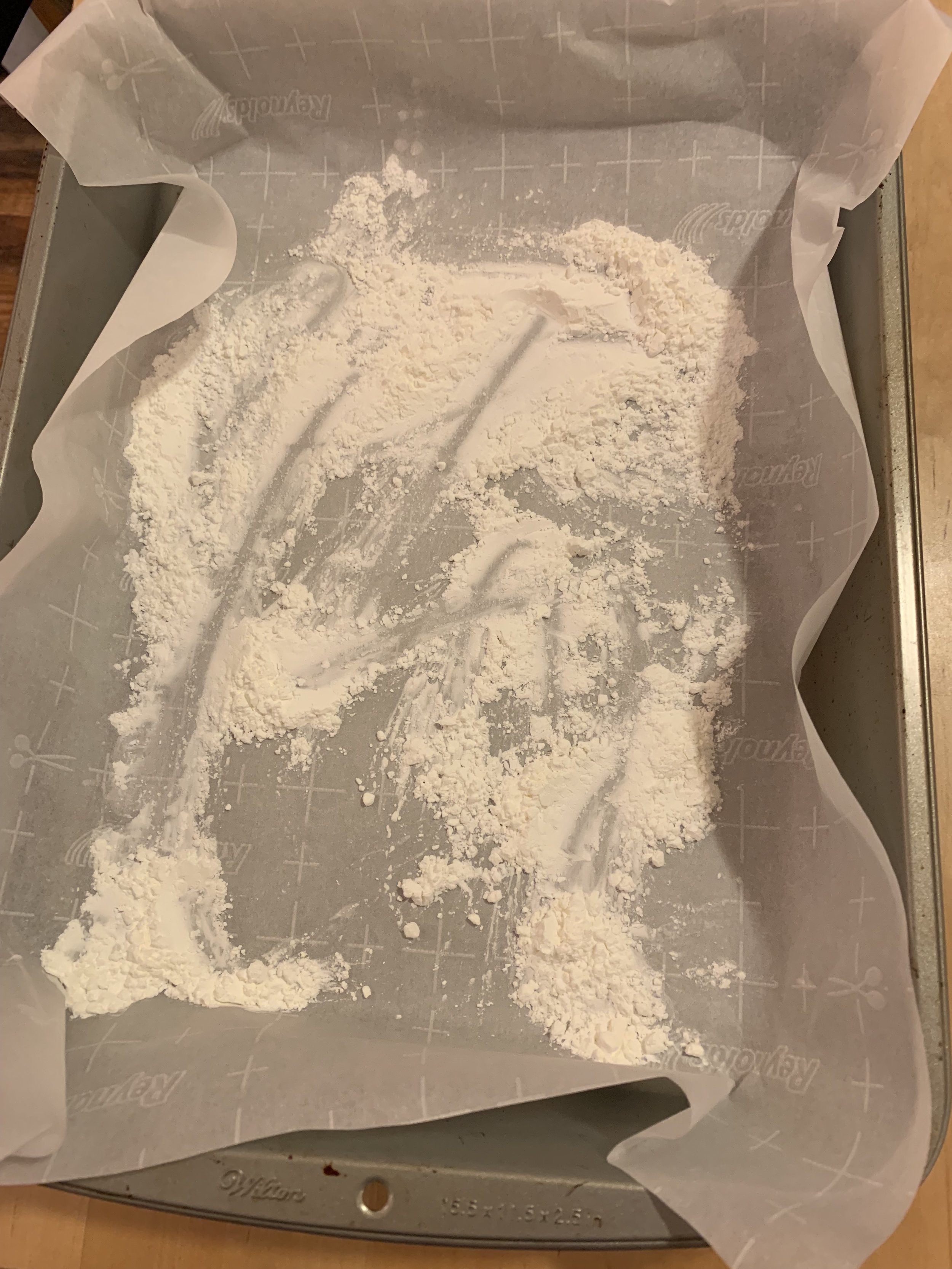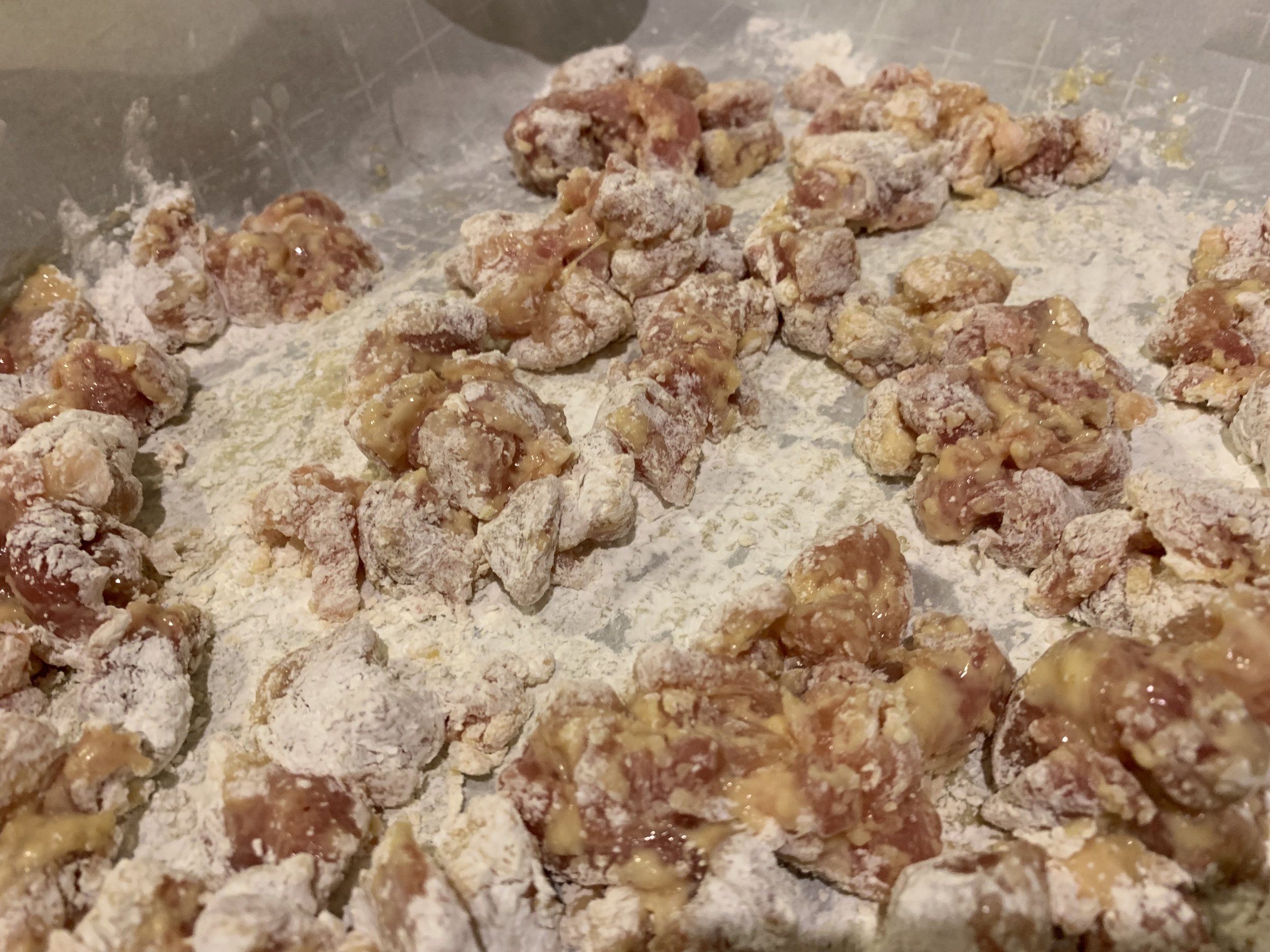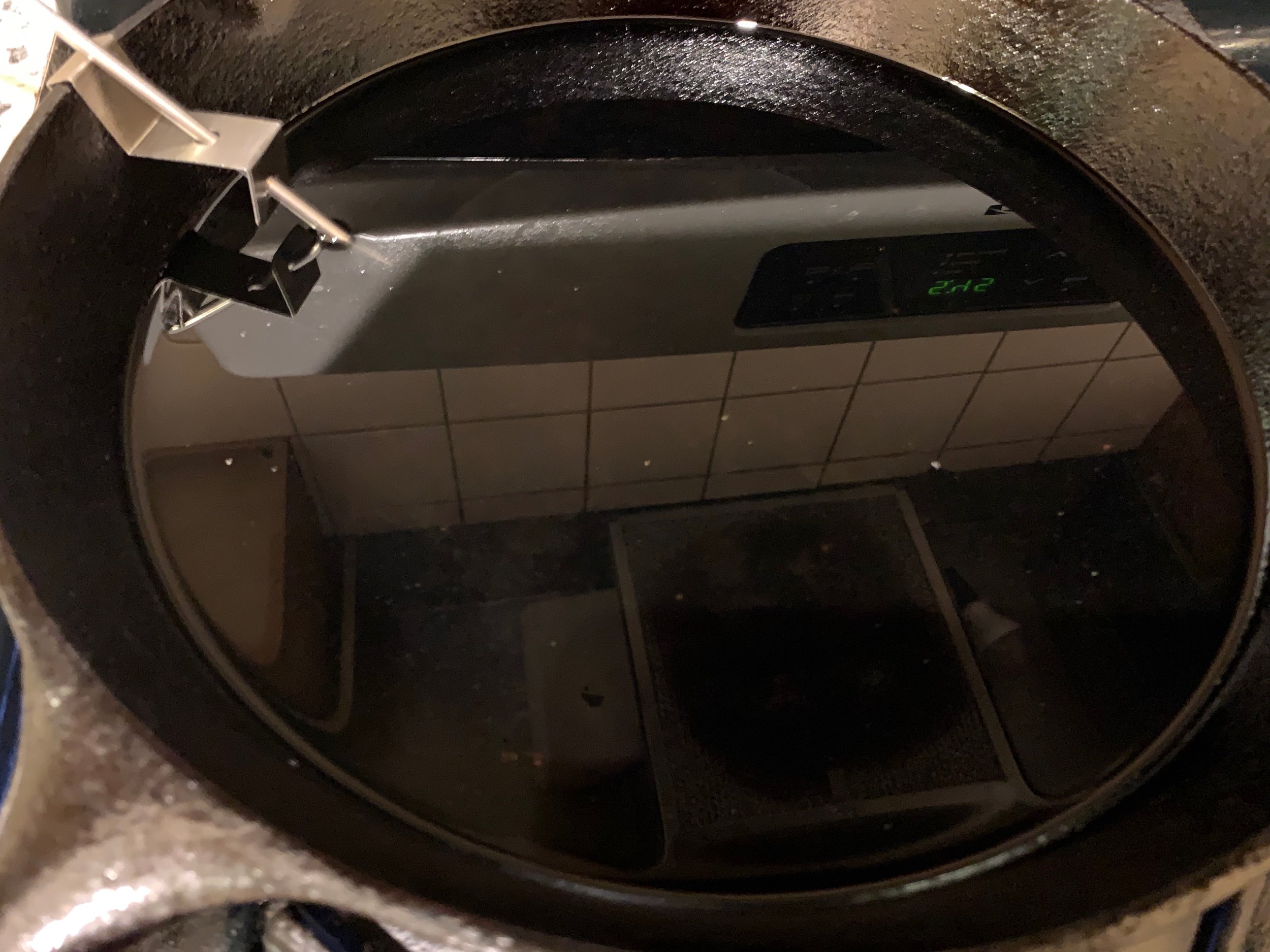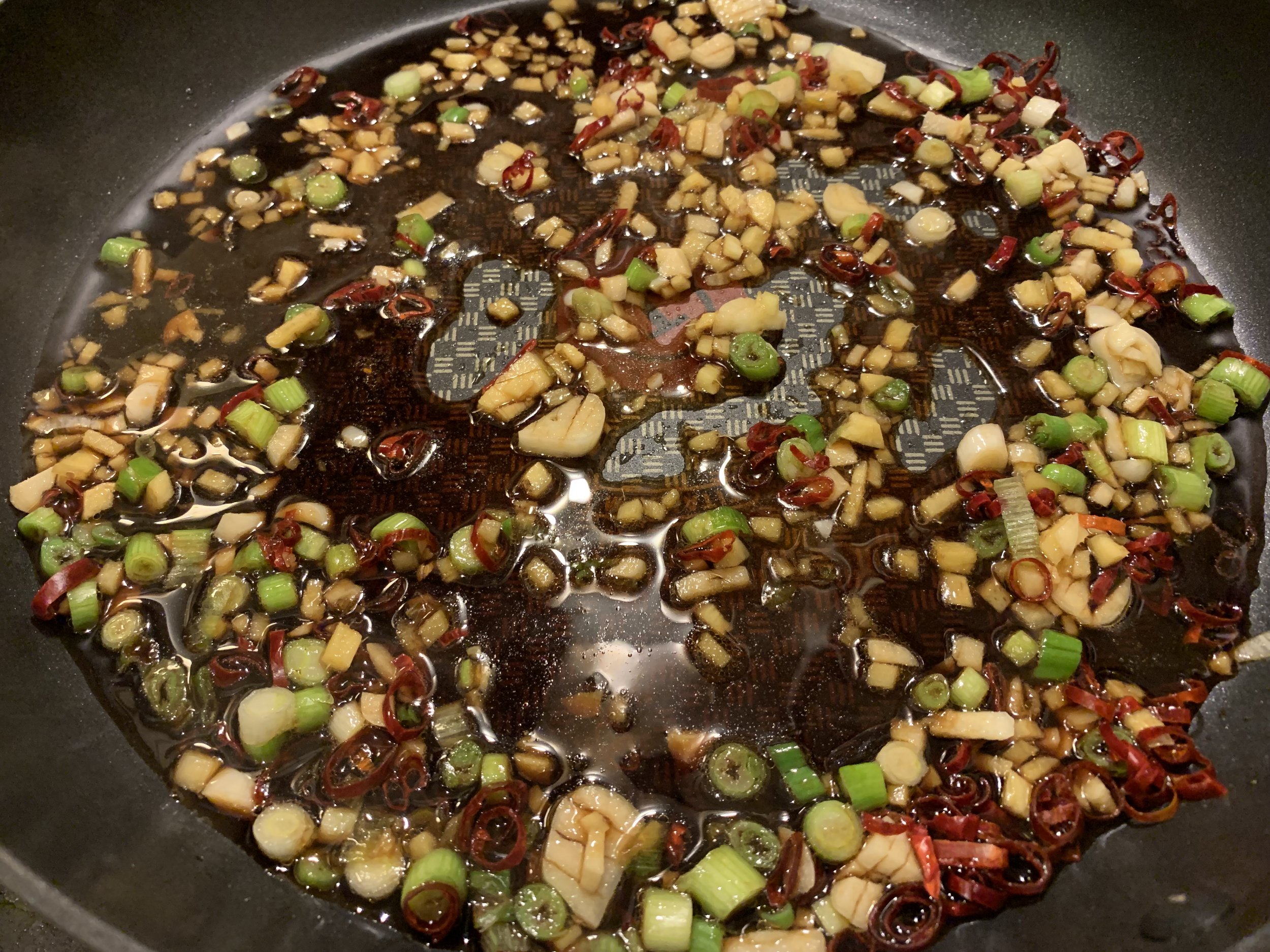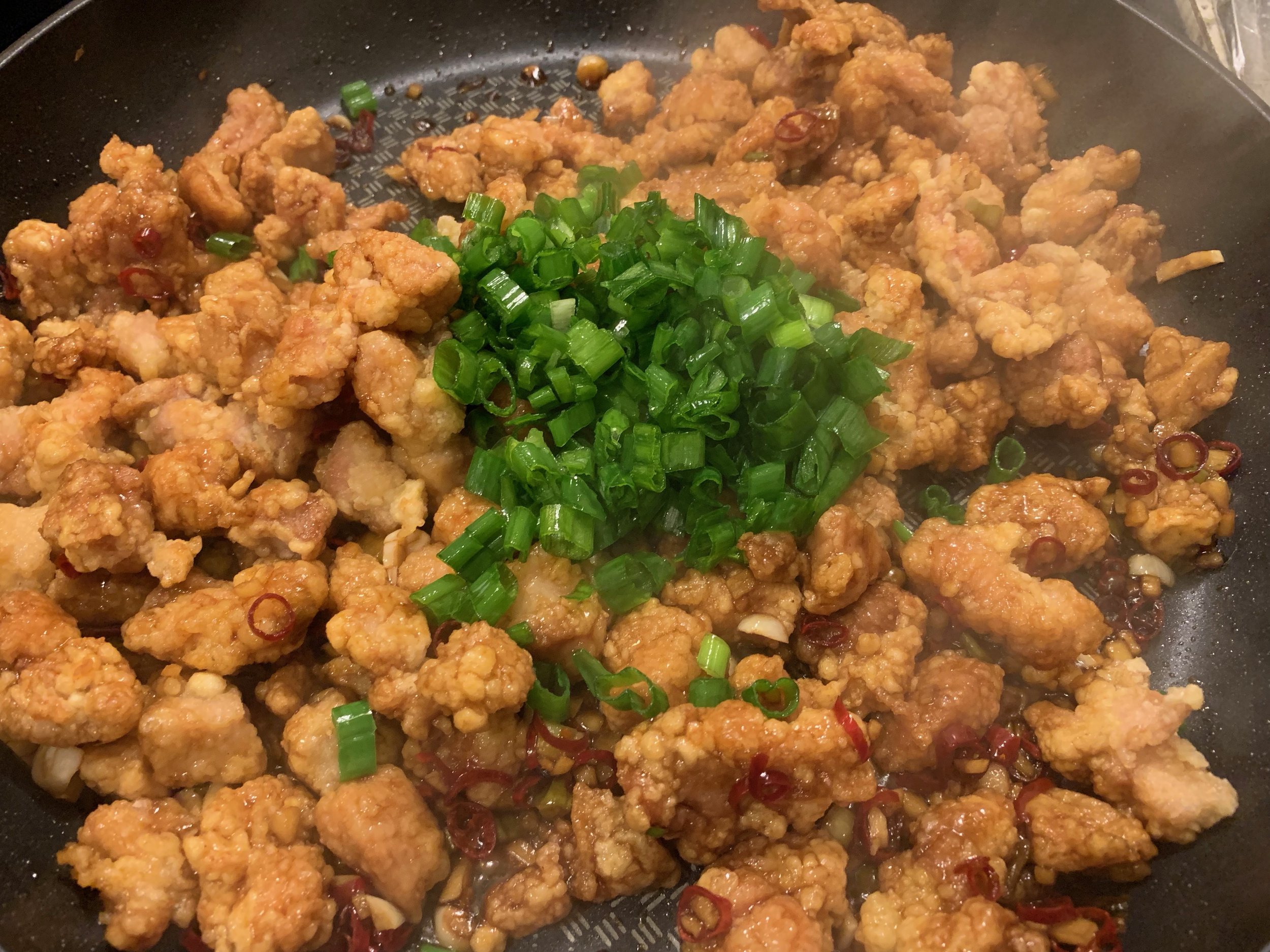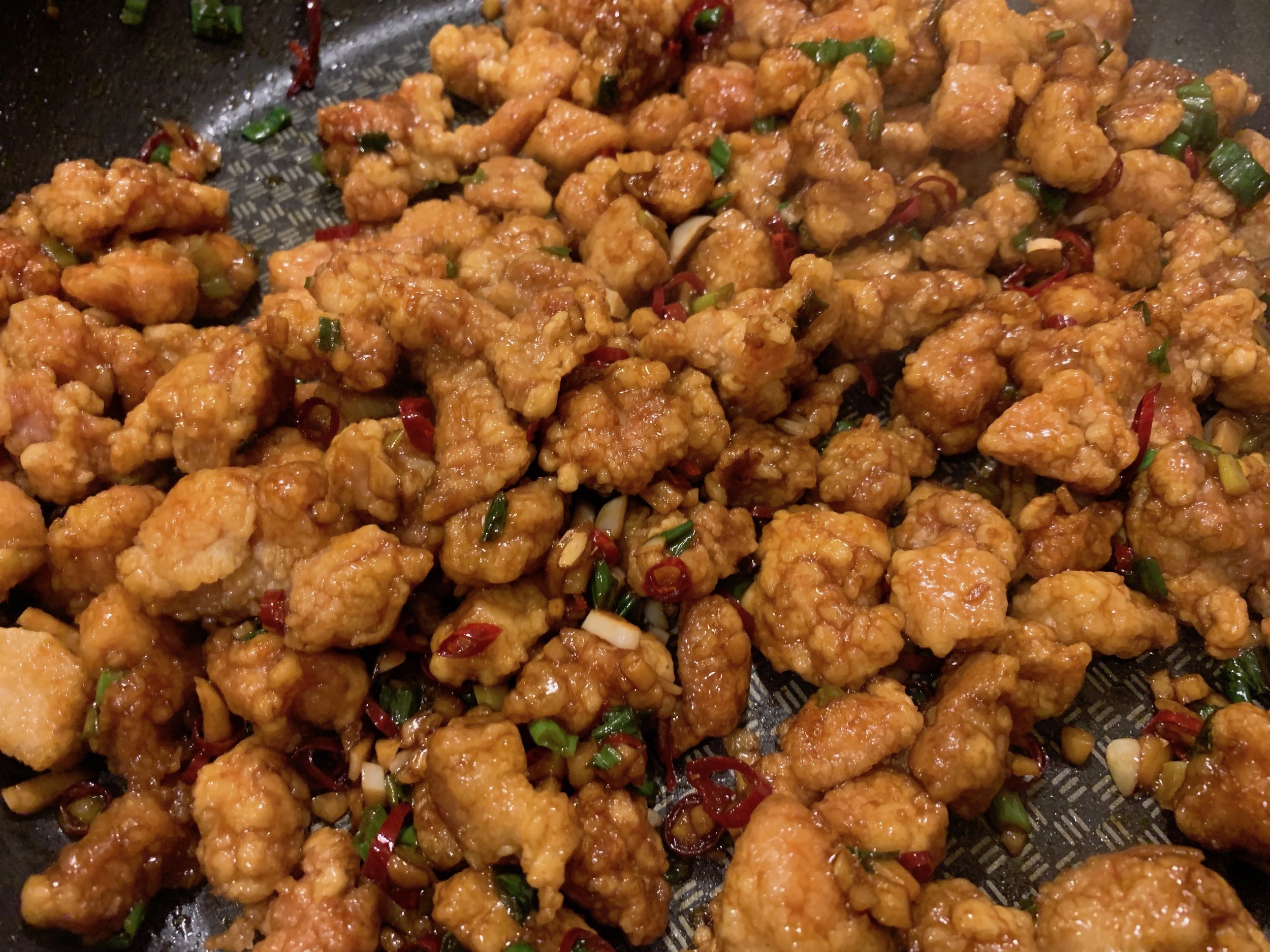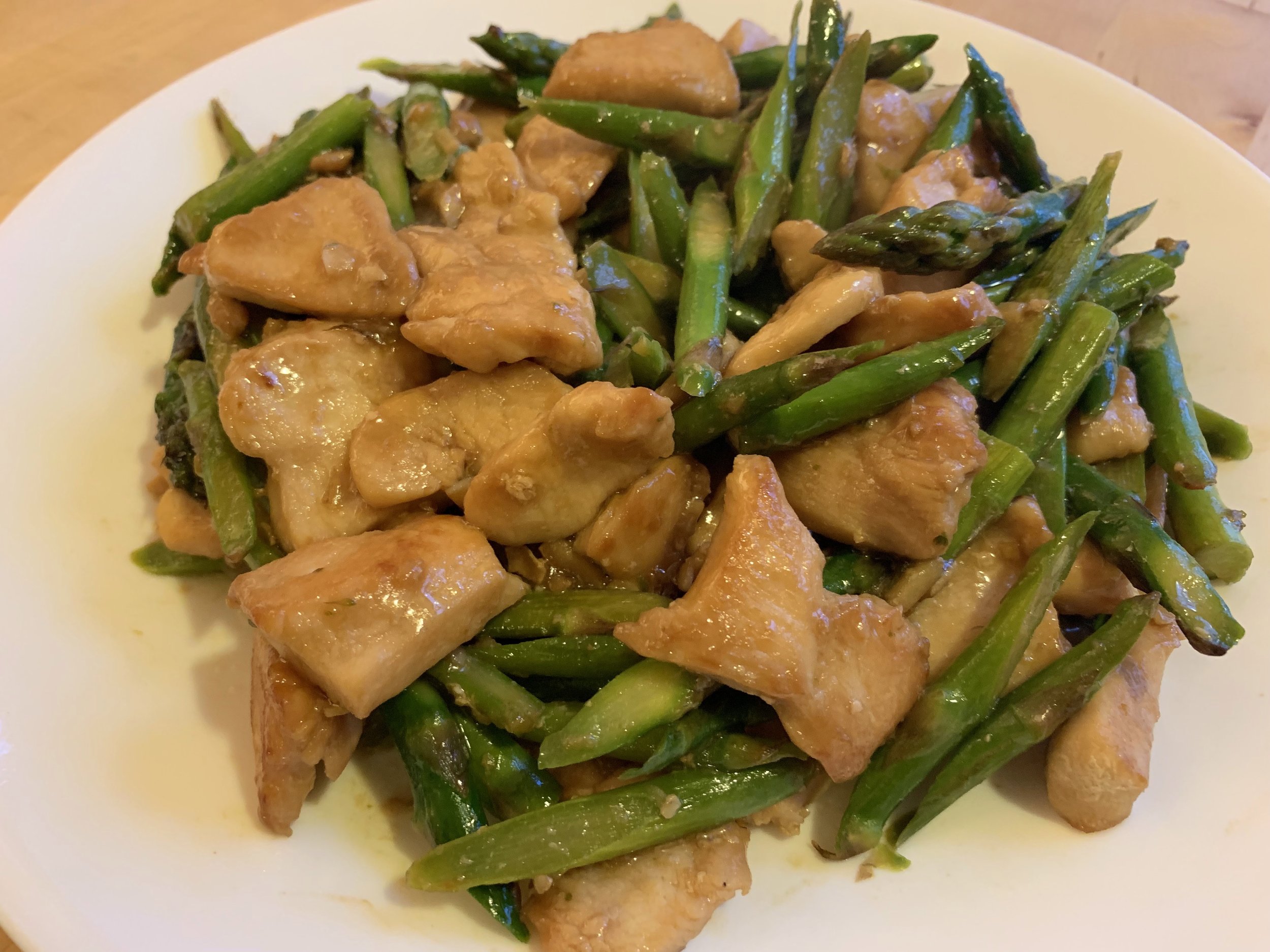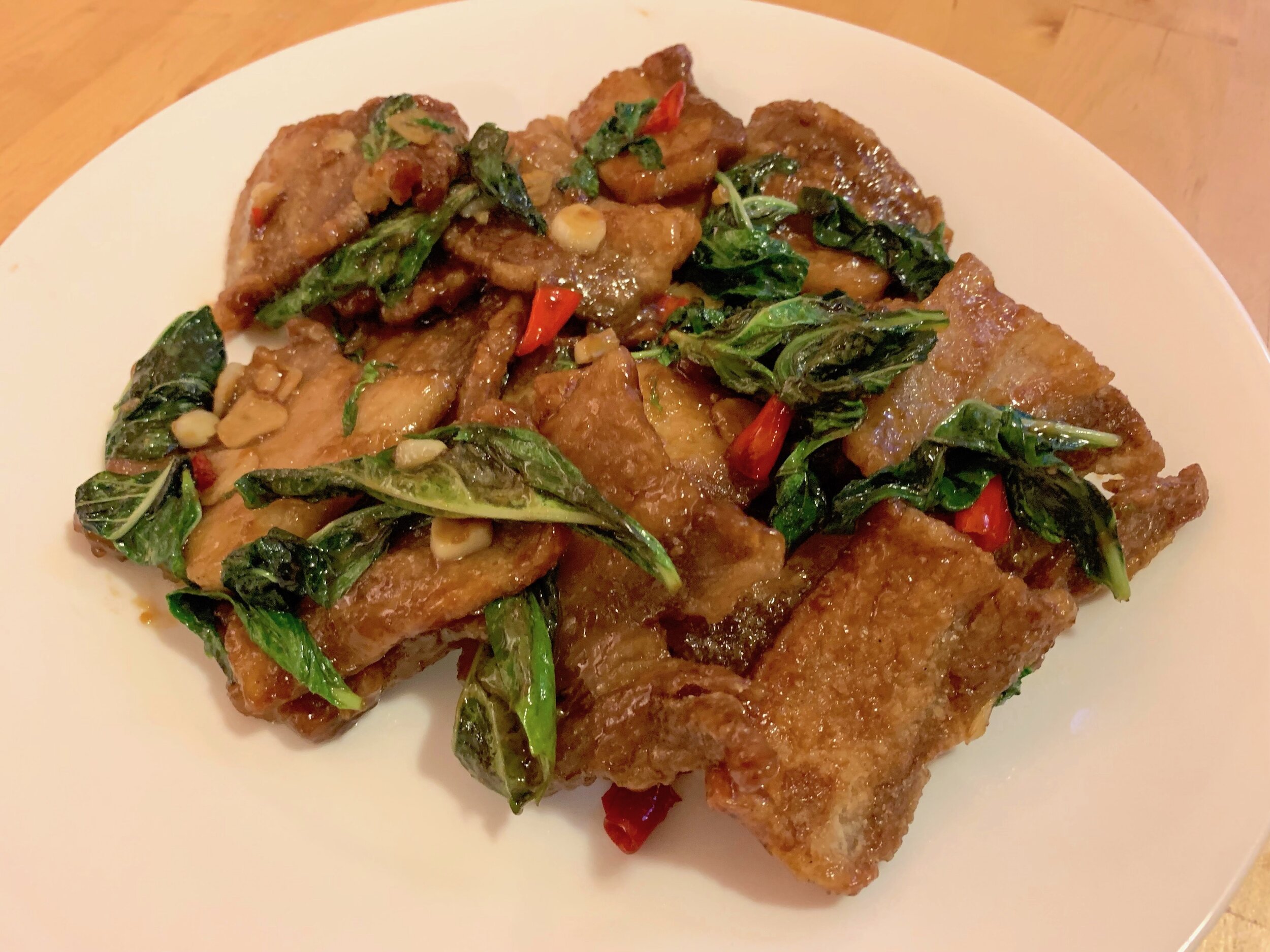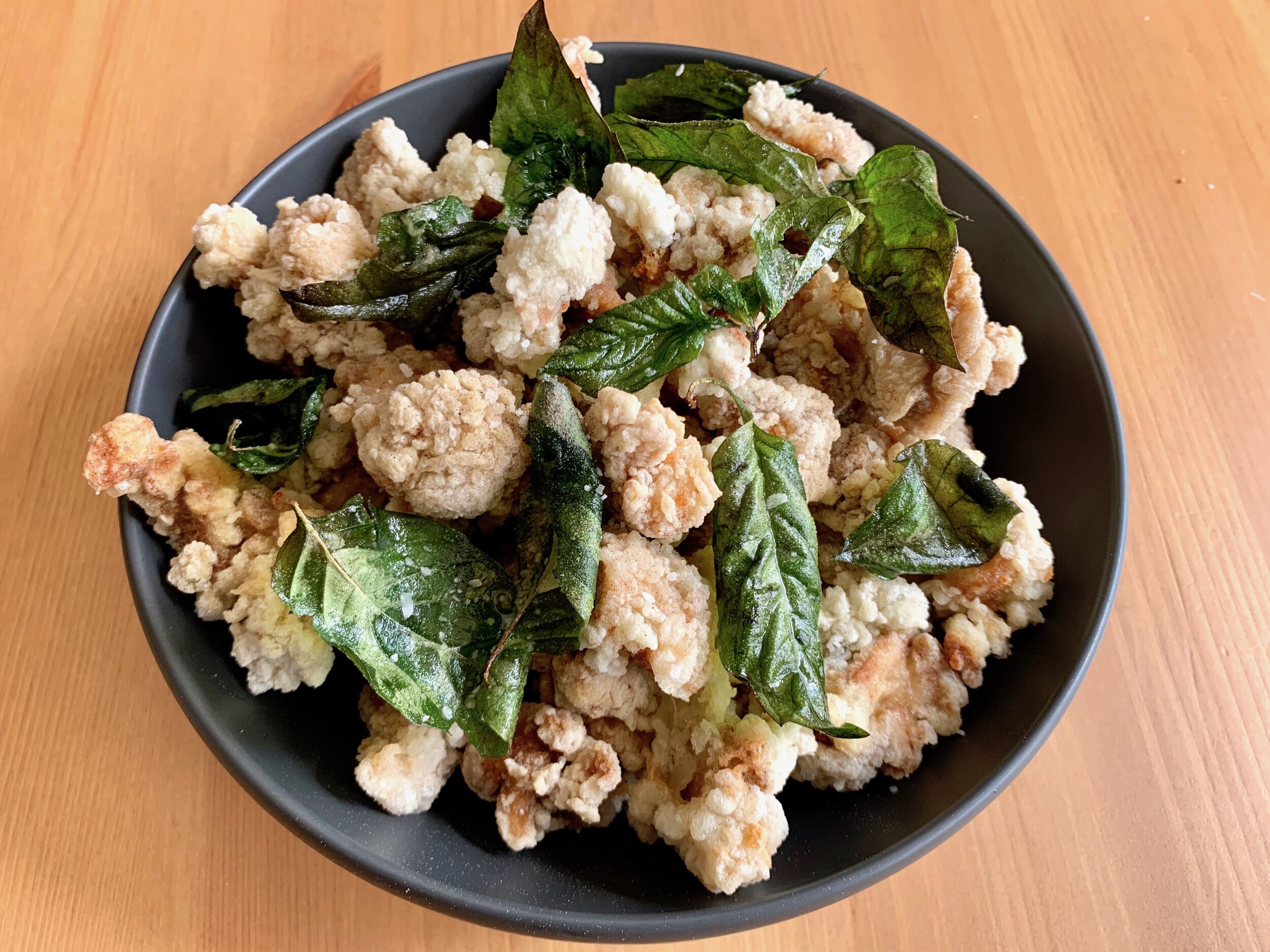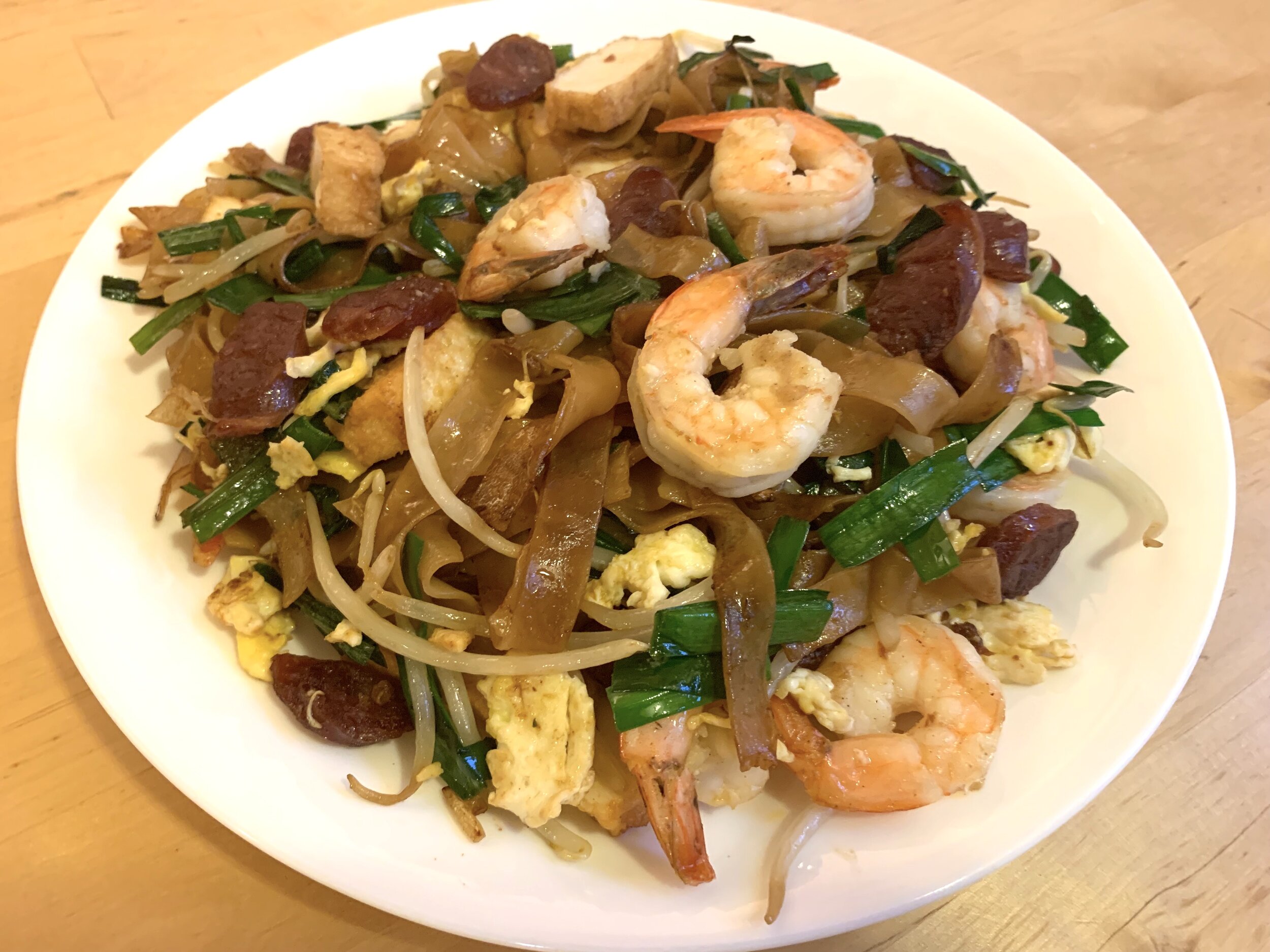General Tso's Chicken
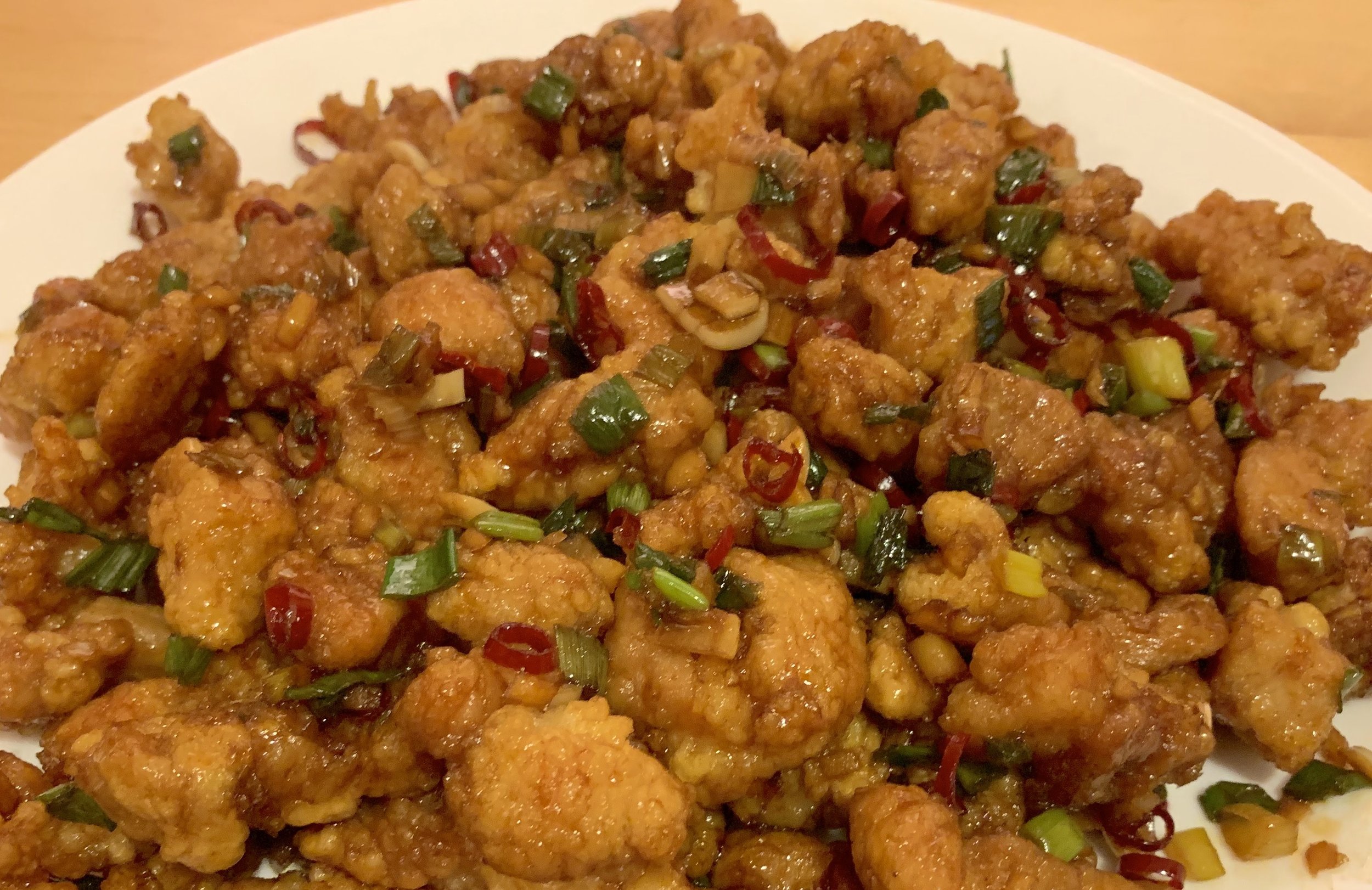
左宗棠雞 (Zuo Zong Tang Ji)
General Tso’s chicken is spicy fried chicken dish, a staple of Chinese-American cuisine and one of the most popular Chinese dishes worldwide. It is named for Zuo Zongtang, a Hunan native and imperial Chinese general best known for helping put down the Taiping Rebellion [1]. However, while the general remains a well-remembered figure in Hunan Province, General Tso’s chicken is unknown there. The dish instead originates in Taiwan in the 1960s. Peng Chang-kuei, a banquet chef for General Chiang Kai-shek, fled with the nationalist government to the island following the communist takeover of China in 1949. Chef Peng created several dishes while in the employ of the Taiwanese government, including a dish of lightly battered chicken flavored with the fragrant trifecta of ginger, garlic, and dried chilies of his native province. As a nod to this inspiration, and also perhaps in an attempt to flatter his boss, Peng named the dish after a great general of history, and General Tso’s chicken was born.
While the dish never gained much popularity in Taiwan, and is rarely found there today, several restaurants began serving the dish in New York City in the 1970s, including one opened by Chef Peng himself. The dish was adjusted to suit local tastes, primarily by adding sugar and toning down the spice level, and proved to be a hit with Americans. General Tso’s chicken soon spread to other Chinese restaurants in the country. Its popularity here was amplified by the massive surge in customers to Chinese restaurants in America following Nixon’s historic visit to China in 1972, and General Tso’s chicken has remained standard Chinese-American takeout fare ever since.
The great irony of all this that General Zuo Zongtang, a conservative traditionalist who made his career by ruthlessly crushing dissent in a dying empire, has his name associated with a dish loved across the world, but is barely Chinese. [2]
There are many variations of General Tso’s chicken found across America. The most common version of General Tso’s chicken is heavily battered and drowning in a thick, sweet sauce. However, my personal preference when it comes to this dish is as it was prepared at our local Chinese restaurant in California, with a light batter, an emphasis on fragrance, and a healthy dose of acid to cut the spice, with only a touch of sugar—a subtle take on the concept. It was a unique preparation unlike that of any other Chinese restaurant I’ve been to, and I would order General Tso’s chicken nearly every time I went there. I have many fond memories of time spent there with family and friends, and I was deeply saddened when, after over 40 years in business, the restaurant announced it would be closing. Ever since, I’ve been trying to replicate their preparation at home, and I’m happy to report that I’ve gotten pretty close.
Ingredients
1 lb boneless chicken thighs
1 egg
½ tsp salt
½ tsp white pepper
⅓ cup cornstarch
3 cups vegetable oil
4 cloves garlic, minced
1½ inch ginger, minced
8 dried red chilies, minced
5 scallions, chopped
1 tbsp dark soy sauce
1 tbsp Shaoxing rice wine (optional)
⅓ cup white rice vinegar
1 tbsp sugar
Let us begin with the chicken. Dice the thigh meat into ½ inch cubes, trimming any excess fat and tendons as you go. I have found that dark meat is the way to go for this recipe—white meat dries out too easily. Keeping the size of chicken pieces uniform will allow for even cooking.
In a large mixing bowl, beat an egg with ½ a teaspoon each of salt and white pepper, along with 2 tablespoons of cornstarch, forming a simple batter. Beat until smooth, and then add the chicken pieces, stirring to coat the pieces well. Set this aside for about 15 minutes.
While the chicken is marinating, take the opportunity to prepare the other ingredients. Mince the aromatics we will be using—garlic, ginger, chilies, and scallions. Separate the white parts of the scallions from the green parts.
Line a sheet pan or large plate with parchment paper, and spread the remaining cornstarch onto it. When the chicken is ready, add the chicken pieces to the sheet pan and toss until the chicken pieces are separated and each individually coated with a light dusting of cornstarch. Add additional cornstarch if necessary. This coating step can be tedious, but is critical to creating a crunchy external texture on the chicken that can stand up to the sauce.
Meanwhile, let us prepare our deep frying station. Whenever you are deep frying, choose a neutral-flavored oil which can stand up to high heat, such as canola oil or peanut oil. In a cast iron pan or heavy duty stainless steel pot, pour enough oil to fully submerge the chicken pieces—at least 1 inch (For most pots, 3 cups of oil should be sufficient). Prepare a holding area for the chicken. I prefer to use a cooling rack set over paper towels on a sheet pan as the landing zone when deep frying. This setup wicks away excess oil while letting the food cool in the air, reducing the buildup of moisture and keeping the food crisp. However, a plate lined with paper towels is also serviceable, if you keep the food in a single layer, with plenty of airflow.
Before starting to fry, you want to ensure that you have an ergonomic layout, easily able to add chicken to the pan, and easily able to remove the cooked chicken to its landing spot. Bring the oil up to 350° F over medium-high heat. The key to successful deep frying is temperature control. You want to maintain the target temperature as much as possible during the cooking process. If you have a dedicated deep fryer unit, the appliance will likely do this for you. But for us deep frying in a pan or pot, we have to do this control manually. The first thing this requires, of course, is an accurate thermometer. Use one which clips onto the side of the pan if possible, which can give you a continuous reading of the temperature. Expect to be making many adjustments to the burner to hold the temperature steady, as the instant the food hits the oil, the temperature will drop. The temperature will then begin to climb as the food heats up, requiring a reduction in burner strength.
When the oil is ready, add the chicken to the pan. Be sure not to crowd the pan—the chicken should be in a single layer, with space between the pieces. Holding the oil temperature at 350° F, deep fry the chicken pieces until they are golden and cooked through. This should take about 3-5 minutes per batch. Use a metal spider or slotted spoon to remove the chicken to the cooling rack. Repeat until all the chicken is cooked.
With the chicken is done, we can turn our attention to the sauce. In a bowl or beaker, mix together the dark soy sauce, rice wine, rice vinegar, and sugar. Then, in a large skillet, heat a tablespoon of oil on medium-high heat. When the oil is hot, add our aromatics to the skillet—the minced ginger, minced garlic, chilies, and the white parts of the scallions. Fry until fragrant, about 30 seconds. Then add the sauce mixture and cook in the pan until the sauce begins to simmer.
Now it’s time to introduce the fried chicken pieces to the sauce. Toss to coat, then add the green parts of the scallions, and continue stirring and tossing. The longer our chicken stays in the pan, the less crisp it becomes. So we’re looking at a bare minimum of mixing time here, just enough to coat the chicken, wilt the scallion greens, and warm everything through. This should take no more than 2 minutes at most—once things look uniform, it’s ready. Serve immediately, over rice.
Substitutions
If you can’t find white rice vinegar, the best commonly available substitute is actually apple cider vinegar. Do not try substituting either white vinegar or Chinkiang black vinegar for rice vinegar, as they have very different flavor profiles.
You can adjust the spice up or down by increasing or decreasing the number of dried chilies. However, the ginger and garlic are integral to the fragrance of the dish. You can mellow their kick by frying the aromatics longer, over a lower heat.
For a more traditionally American preparation of this dish, cut the vinegar back to 2 tablespoons, increase the sugar to 3 tablespoons, and add a half a cup of water to the sauce mixture. Thicken with a cornstarch slurry. (Please try this version before you do that, though!)
[1] The Taiping Rebellion was a bloody civil war waged throughout China from 1850 to 1864, between the Qing Dynasty and the Taiping Heavenly Kingdom. Historians estimate that 20-30 million people died in the conflict.
[2] For more on the origins of General Tso’s chicken and the Chinese-American experience, I recommend Jennifer Lee’s excellent documentary, The Search for General Tso.
Recipe
Prep Time: 10 min Cook Time: 15 min Total Time: 35 min
(+10 min inactive)
Difficulty: 3/5
Heat Sources: 2 burners
Equipment: skillet, pan for deep frying, thermometer, slotted spoon, sheet pan, cooling rack (optional)
Servings: 6
Ingredients
For the Chicken
1 lb boneless chicken thighs
1 egg
½ tsp salt
½ tsp white pepper
⅓ cup cornstarch
3 cups vegetable oil
For the Sauce
4 cloves garlic, minced
1½ inch ginger, minced
8 dried red chilies, minced
5 scallions, chopped
1 tbsp dark soy sauce
1 tbsp Shaoxing rice wine (optional)
⅓ cup white rice vinegar
1 tbsp sugar
1 tbsp vegetable oil
Instructions
1. Cut the chicken into ½ inch cubes. Prepare a batter with the egg, ½ teaspoon salt, ½ teaspoon white pepper, and 2 tablespoons of cornstarch. Beat until smooth, then add the chicken, coating well. Set aside for 15 minutes.
2. While the chicken marinates, mince the garlic, ginger, chilies, and scallions.
3. Line a sheet pan with parchment paper, spread the remaining cornstarch on it, and toss the chicken pieces in the cornstarch until each is lightly coated.
4. Pour at least an inch of frying oil into a heavy stainless steel or cast iron pan, and bring the oil up to 350° F. Deep fry the chicken pieces until golden and cooked through, about 3-5 minutes. Work in batches if necessary.
5. Remove the chicken pieces from the oil and onto a cooling rack.
6. Prepare the sauce by mixing the dark soy sauce, rice wine, vinegar, and sugar.
7. In a large skillet, heat 1 tablespoon of oil on medium-high heat. Add the ginger, garlic, chilies, and white parts of the scallions to the skillet, and fry until fragrant, about 30 seconds.
8. Add the sauce and cook for about a minute, until the liquid begins to simmer and reduce.
9. Add the chicken to the pan and toss to coat the pieces with sauce. Add the green parts of the scallions to the pan and stir, over heat, until the chicken pieces are uniformly coated (no more than 2 minutes). Serve immediately.





